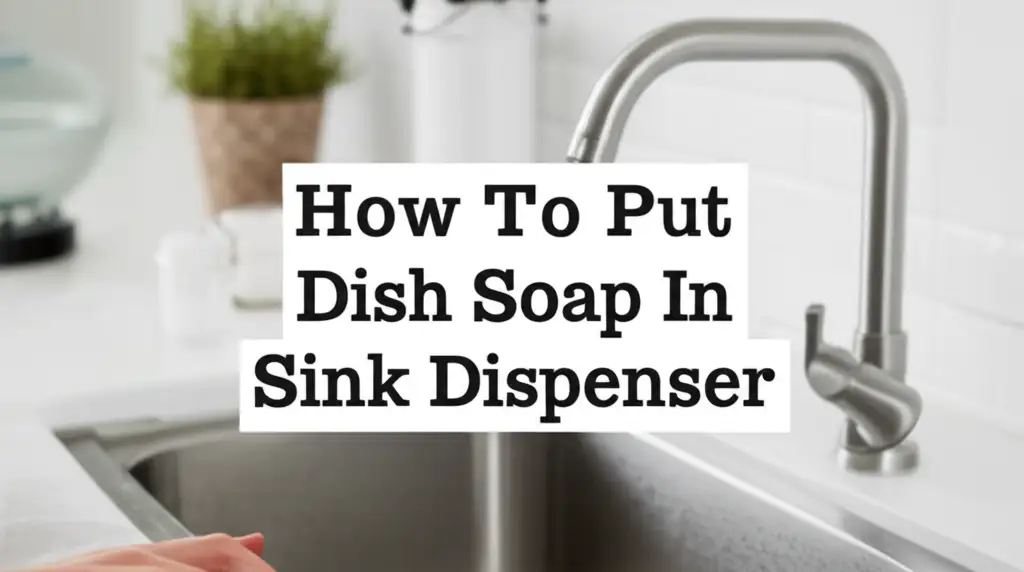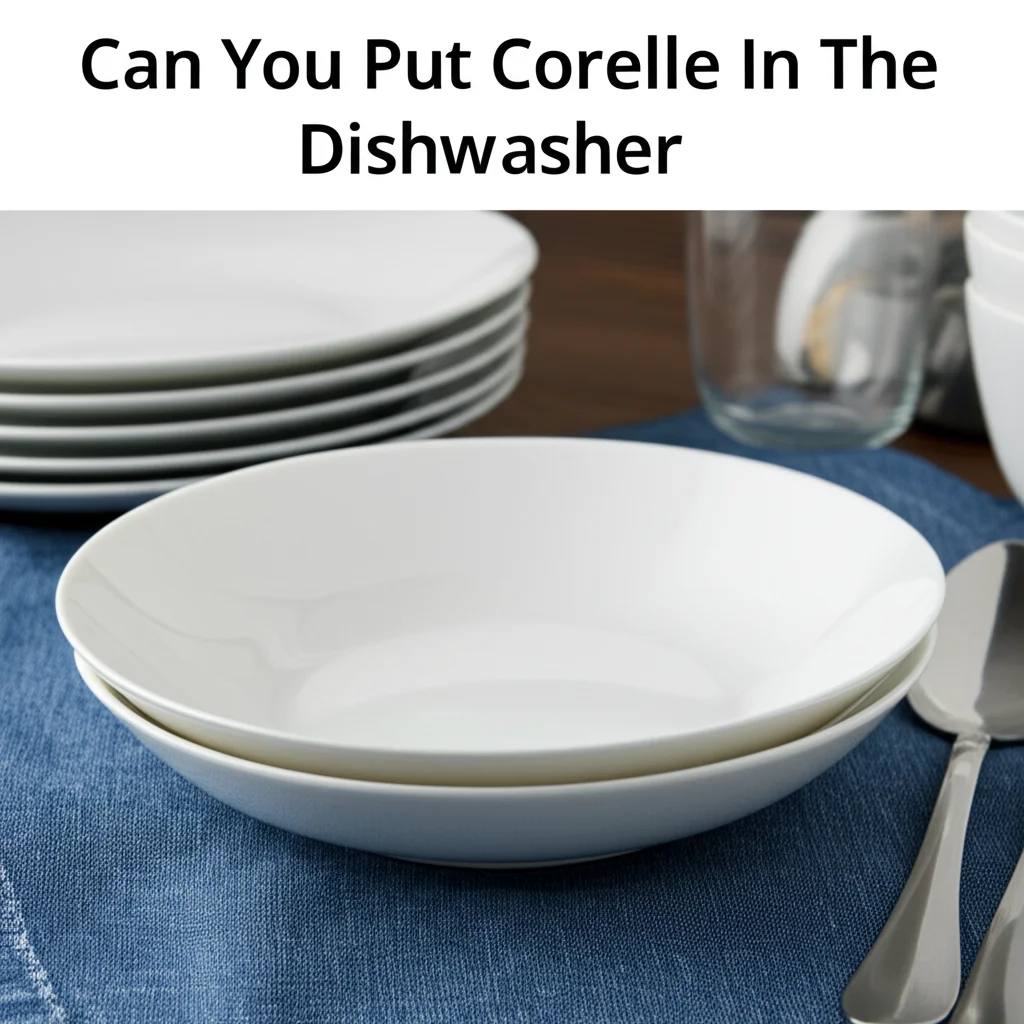· Todd Martin · Kitchen Essentials · 12 min read
How To Put Dish Soap In Sink Dispenser

How To Put Dish Soap In Sink Dispenser: A Simple Guide
Imagine a kitchen without clutter. No more bulky dish soap bottles sitting on your counter. A built-in sink dispenser offers a neat solution. It brings both convenience and a clean look to your space. Knowing how to put dish soap in sink dispenser makes this kitchen upgrade easy. This guide will walk you through the simple steps. We will cover various dispenser types and share helpful tips.
This article explores different methods for refilling your dispenser. We provide instructions for both top-fill and under-sink models. You will learn about necessary tools and common issues. We also discuss maintenance and the benefits of using a sink dispenser. Get ready to streamline your dishwashing routine.
Takeaway
Putting dish soap in your sink dispenser is a simple task that enhances kitchen organization.
- Identify your dispenser type: top-fill or under-sink.
- Gather necessary tools like a funnel and towel.
- Follow specific steps for each dispenser design.
- Address common issues like clogs or airlocks.
- Maintain your dispenser for lasting performance.
To put dish soap in a sink dispenser, first identify if it is a top-fill or under-sink model. For top-fill, remove the pump, insert a funnel, and pour soap. For under-sink models, access the bottle below the counter, unscrew it, fill, and reattach.
Understanding Your Sink Soap Dispenser
Knowing your sink soap dispenser is the first step. Dispenser models come in two main types. Each type has its own method for refilling. I find understanding these differences makes the refill process much smoother. This knowledge helps you prepare correctly.
Types of Sink Dispensers
Sink dispensers usually fall into two categories: top-fill and under-sink. Top-fill dispensers are very convenient. You refill them from above the counter. This means you do not need to go under the sink.
Under-sink dispensers have a bottle directly attached below the counter. You fill this bottle by reaching under your sink. Both types serve the same purpose. They help dispense dish soap easily.
Components of a Dispenser
Every sink dispenser has key parts. The spout is where the soap comes out. The pump mechanism moves the soap. A tube connects the pump to the soap reservoir. The reservoir holds the dish soap.
For top-fill models, the reservoir is often a bottle screwed onto the underside of the pump. For under-sink models, the bottle is separate. It screws directly onto the bottom of the pump assembly. Understanding these parts helps you identify how to refill your specific unit.
Essential Tools and Preparations for Refilling
Preparing for your refill saves time and prevents messes. Having the right tools makes the process simple. I always gather everything before starting. This ensures a smooth and quick refill. A little preparation goes a long way.
Gathering Your Tools
You will need a few basic items. A funnel is crucial for most dispenser types. It helps guide the soap into the opening without spills. An old towel or rag is also important. This helps clean up any drips.
Of course, you need your liquid dish soap. Choose your preferred brand. Make sure you have enough to fill the dispenser completely. Having these items ready prevents interruptions during the refill.
Preparing Your Workspace
Clear the area around your sink. Remove any dishes or sponges. This gives you space to work. Place your towel around the dispenser base. This catches any spills immediately.
For under-sink models, you will need access below the counter. Clear out any items blocking the dispenser bottle. You might also want a flashlight. This helps you see clearly in a dark cabinet. A clean and clear space makes the job easy.
Step-by-Step Guide for Top-Fill Sink Dispensers
Refilling a top-fill dispenser is incredibly straightforward. This design prioritizes ease of access. I find this method very convenient in a busy kitchen. It takes just a few moments to complete.
Removing the Pump Head
First, grasp the dispenser’s spout firmly. Twist it counter-clockwise or simply pull it straight up. The entire pump head should detach from the base. This reveals the opening for the soap. Some models may require a slight tug.
Once the pump head is off, set it aside carefully. Place it on your clean towel. This prevents soap residue from getting on your counter. The opening to the soap reservoir is now exposed.
Pouring the Dish Soap
Next, place your funnel into the exposed opening. The funnel directs the soap into the dispenser’s body. Hold it steady to prevent tipping. Pour your liquid dish soap slowly into the funnel.
Watch the soap level. Do not overfill the dispenser. Leave a small space at the top. This prevents overflow when you reinsert the pump. Overfilling can cause a mess.
Reattaching the Pump Head
After pouring, carefully remove the funnel. Wipe away any drips around the opening. Then, take the pump head. Insert it back into the dispenser’s body. Make sure it seats properly.
Twist it clockwise if it was a screw-on type. Press it down firmly if it was a push-in type. Give the pump a few pushes. This primes the dispenser. Soap should now come out smoothly.
Step-by-Step Guide for Under-Sink Bottle Dispensers
Under-sink bottle dispensers require a bit more effort. You need to access the cabinet below. While it is not as quick as a top-fill, it is still a simple process. I sometimes use a headlamp for better visibility under the sink.
Accessing the Dispenser Bottle
Begin by opening the cabinet doors under your sink. Locate the base of the sink dispenser. You will see a bottle screwed onto the underside of the pump mechanism. Clear any items that block your access to this bottle.
It might be dark or cramped. Use a flashlight if needed. This helps you clearly see the bottle. Make sure you have enough room to work comfortably.
Unscrewing and Filling the Bottle
Reach up and carefully unscrew the bottle from the dispenser’s base. Some bottles might be tight. Turn it counter-clockwise until it detaches. Once loose, bring the bottle out from under the sink.
Hold the bottle upright. Pour your dish soap directly into the bottle. A funnel can still be helpful here to avoid spills. Fill the bottle to near the top, leaving some space.
Reattaching and Testing
Once filled, carefully screw the bottle back onto the dispenser’s base under the sink. Turn it clockwise until it is secure. Ensure it is tightly fastened to prevent leaks. You want a good seal.
After reattaching, push the dispenser pump several times. This action draws the soap up the tube. It primes the system. Keep pumping until soap flows out smoothly from the spout. If you face issues with soap not coming out, consider if the soap is too thick. Sometimes, diluting the soap helps it flow better through dispensers. You can also explore options for making your own dish soap with natural ingredients, which might have a different consistency, by learning how to make dish soap with soap nuts.
Troubleshooting Common Refilling Issues
Sometimes, a dispenser does not work perfectly after a refill. You might encounter a few common problems. Knowing how to fix them saves frustration. I have experienced these issues myself and found simple solutions. Most problems are easy to resolve.
Clogging or No Soap Dispensing
If no soap comes out, the dispenser might be clogged. Dried soap can build up in the spout or tube. Air can also get trapped in the line. This prevents the soap from moving.
Try disassembling the pump and tube. Rinse them thoroughly with warm water. This clears any blockages. For airlocks, pump the dispenser vigorously several times. This helps push the air out. Sometimes a good clean is all it needs.
Leaks Around the Dispenser Base
Leaks often happen if the bottle is not screwed on tightly enough. Or, a rubber gasket might be missing or damaged. Inspect the connection points for any gaps. A loose connection allows soap to seep out.
Tighten the bottle securely. If a gasket is worn, you might need a replacement. Check your dispenser’s manual for part information. Ensuring a tight seal stops unwanted drips and messes.
Pump Not Returning or Sticking
A sticky pump usually indicates soap residue buildup. The soap dries around the pump mechanism. This makes it hard for the pump to move freely. A thorough cleaning is the best solution.
Remove the pump head. Soak it in warm, soapy water for a few minutes. You can also try pumping warm water through it. This dissolves the hardened soap. Repeat this cleaning regularly to prevent sticking. Maintenance often prevents these problems before they start. Just like maintaining your kitchen sink dispenser, keeping other household dispensers clean, such as learning how to clean Whirlpool washing machine soap dispenser or even how to clean Miele washing machine soap dispenser, extends their life and ensures proper function.
Optimizing Dish Soap and Dispenser Maintenance
Proper maintenance keeps your dispenser working well. It also prevents clogs and extends its lifespan. Choosing the right dish soap helps too. I have found that a little regular care makes a big difference. This ensures your dispenser is always ready for use.
Choosing the Right Dish Soap Consistency
Dish soap comes in different thicknesses. Very thick soaps can clog dispensers. They might not pump smoothly. Thin soaps can drip or create too much foam. Find a medium consistency soap.
If your favorite soap is too thick, you can dilute it slightly. Add a small amount of water to the soap in the dispenser bottle. Mix it gently. Test the consistency. This helps the soap flow easily through the pump. Avoid diluting too much, as it weakens cleaning power.
Regular Cleaning Practices
Clean your dispenser regularly to prevent buildup. Remove the pump head. Rinse it thoroughly with warm water. You can use a small brush for the spout if needed. This clears out any dried soap.
For the tube, pump warm water through the dispenser until it runs clear. This flushes out the internal parts. Doing this every few weeks keeps the dispenser clean. It helps avoid pump issues.
Preventing Buildup and Clogs
To stop clogs, avoid letting the dispenser run completely empty. Refill it when the soap level is low. This prevents air from getting trapped. It also keeps the pump mechanism wet with soap.
If you are away for a long time, consider cleaning out the dispenser completely. Let it dry fully. This prevents soap from drying inside. Proper care ensures your dispenser dispenses soap without problems every time.
Benefits of Using a Sink Dispenser and Eco-Friendly Choices
Using a built-in sink dispenser offers many advantages. It goes beyond just looking good. I appreciate the functionality and environmental benefits. It makes daily tasks more efficient and responsible. This small change can have a big impact.
Enhanced Convenience and Aesthetics
A sink dispenser provides immediate access to dish soap. You do not need to reach for a bottle. This makes dishwashing quicker and smoother. It integrates seamlessly with your kitchen design. The counter space stays clear.
This creates a clean, organized look. It eliminates visual clutter. Your kitchen appears more streamlined. This improved aesthetic makes the kitchen a more pleasant place to be. It is a small detail that makes a big difference in daily life.
Cost Savings and Bulk Buying
Refillable dispensers encourage buying dish soap in bulk. Bulk soap is often cheaper per ounce. This saves you money over time. You also make fewer trips to the store for soap.
Buying in bulk means less packaging waste. Large containers use less plastic than many smaller bottles. This is a practical way to save both money and resources. It supports a more sustainable lifestyle.
Eco-Friendly Dish Soap Options
You can fill your dispenser with eco-friendly dish soaps. Many brands offer biodegradable formulas. These soaps are better for the environment. They break down naturally.
Some people even make their own dish soap. Using a dispenser is perfect for homemade solutions. This reduces your carbon footprint. It is a simple step towards a greener home. Choosing refillable options significantly lowers plastic waste. This decision positively impacts our planet.
FAQ Section
Can I use any liquid soap in my sink dispenser?
Most liquid dish soaps work well in sink dispensers. Avoid very thick soaps or those with scrubbing particles. These can clog the pump or dispenser tube. Hand soap or lotion can also work if their consistency is appropriate. Always test a small amount first.
How often should I refill my sink dispenser?
Refill your sink dispenser when the soap level is low. This prevents the pump from drawing air. It also ensures you never run out unexpectedly during dishwashing. For most households, this means refilling every few weeks, depending on usage.
Why is my sink dispenser not pumping soap?
If your dispenser does not pump soap, check for clogs. Dried soap can block the spout or tube. Air trapped in the line can also prevent flow. Disassemble and clean the pump. Prime it by pumping several times to remove air bubbles.
How do I clean my sink soap dispenser?
To clean your sink dispenser, remove the pump head. Rinse it under warm water to remove dried soap. For the internal parts, pump warm water through the dispenser. This flushes out residue. Regularly cleaning prevents clogs and keeps it working.
Can I dilute dish soap for the dispenser?
Yes, you can dilute thick dish soap slightly. Add a small amount of water to the soap in the dispenser bottle. Mix it gently. Diluting helps very thick soaps flow more smoothly through the pump mechanism. Be careful not to dilute too much, as it reduces cleaning power.
What if my dispenser tube does not reach the bottom?
If your dispenser tube does not reach the bottom, you can extend it. Some people attach a small piece of flexible tubing. You can also place small, heavy, non-corrosive objects inside the bottle. This raises the soap level slightly. Ensure these additions do not block the tube opening.
Conclusion
Putting dish soap in your sink dispenser is a simple task. It offers many benefits. You gain a more organized kitchen. You enjoy the convenience of instant soap access. You also contribute to a greener planet. Understanding your dispenser type makes the process seamless. Whether you have a top-fill or an under-sink model, the steps are clear.
Regular maintenance ensures your dispenser functions perfectly. It prevents clogs and extends its life. Embracing this small change makes a big difference in your daily routine. Enjoy a decluttered counter and easy access to dish soap. Make your kitchen a more efficient and pleasant space. Start using your sink dispenser to its full potential today.





